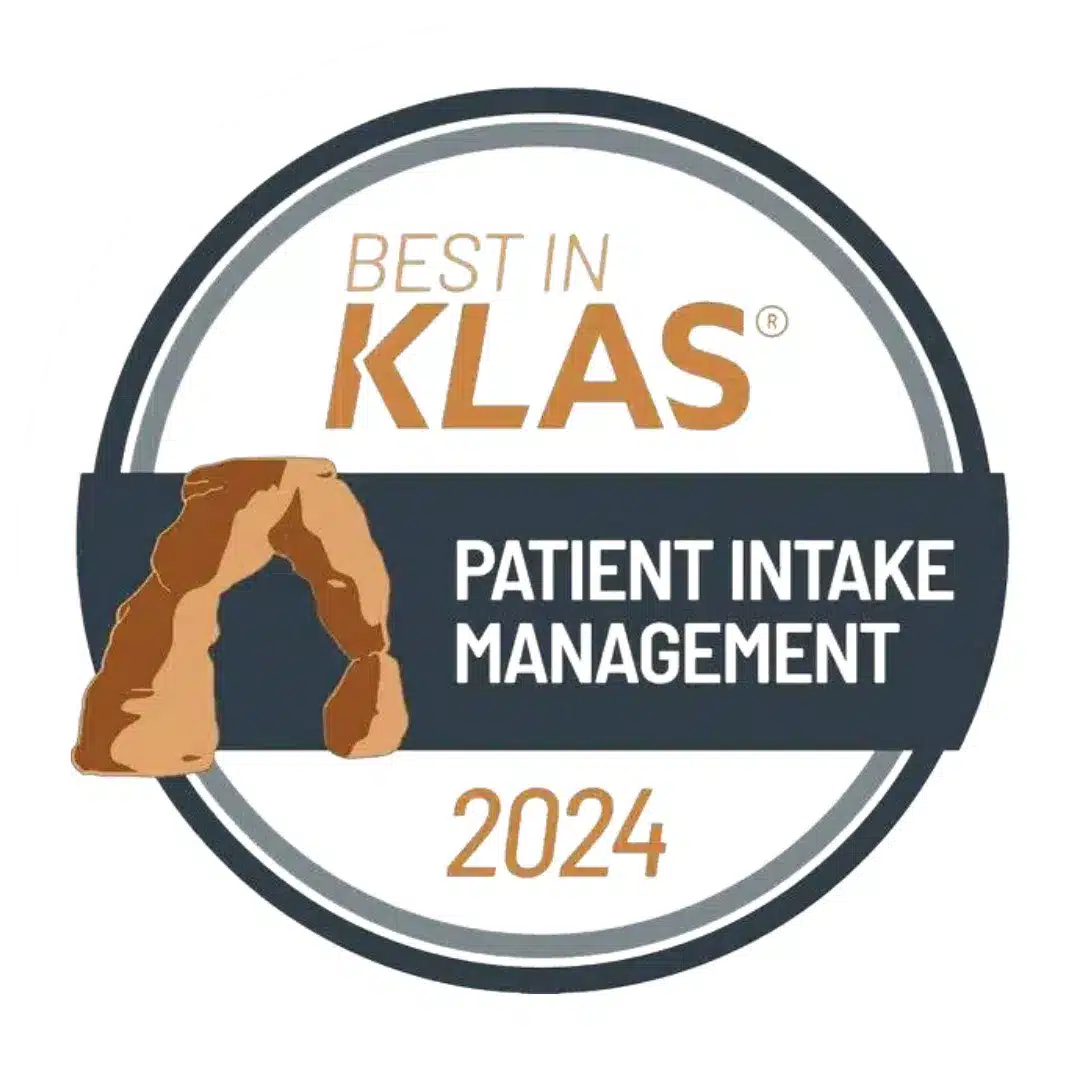
Patient intake solutions are revolutionizing the healthcare industry by digitizing and automating the burdensome administrative tasks traditionally completed in often overcrowded waiting rooms.
The best pre-arrival platforms have successfully removed the barriers that prevented patients from conveniently completing all required administrative tasks before they arrive for their appointments. Since the pandemic, healthcare practices are using patient intake solutions to streamline the check-in process with the important benefit of significantly enhancing the patient experience.
Patients generally welcome this new capability to deliver their healthcare data at a time they choose, typically before setting foot in the practice office. They are also empowered to manage the scheduling of their office visits via a shared integrated calendar and to communicate with their healthcare practice via text rather than waiting on hold to conduct the same business by phone – both features some of these platforms offer.
Concerns arise
While pre-arrival intake platforms represent an evolutionary transformation in the physician/patient relationship, there’s also a potential downside to these platforms of which most patients are unaware.
Many of these platforms collect and store identifiable patient information, raising concerns about data security and privacy when it comes to taking advantage of these conveniences. Specifically, several recent investigations (Patterns, BMJ, NCBI) have shed light on the concerning practice of patient intake apps sharing data with advertisers for targeted advertising purposes. This involves the use of data mining techniques that analyze patients’ information and preferences, enabling advertisers to target their messaging and promotions to specific individuals.
Imagine heading into your doctor’s appointment to discuss a diabetes management program and seeing a branded diabetes medicine show up on your cell phone or tablet just as you walk in for the consultation. This raises some very serious questions. As an example, could seeing this ad prejudice you or your doctor’s decision when it comes to identifying the best treatment option?
Based on the information patients provide during intake (current medications, past medical history, reason for visit and more), advertisers can pepper the patient with ads and advertorials. What’s even more surprising is that many healthcare organizations don’t even know that the platform they subscribed to is participating in this pharmaceutical advertising program.
Even more concerning is that the fee that these platforms charge the pharmaceutical companies often exceeds the subscription fees that the practices are paying. Simply put, some digital patient engagement platforms are harvesting patient data to significantly increase their revenue without them even knowing it’s happening.
In a rush to take advantage of the convenience of these intake platforms, most patients overlook the section in the terms and agreements that enables the app developer to share personal information obtained via the app. In fact, most patients don’t realize that they have opted into these ad plans and they have the absolute ability to opt out.
The Washington Post recently highlighted the ethical challenges surrounding health privacy and the alarming extent to which patient data is being leveraged for targeted advertising. The use of patient data for commercial purposes raises questions about consent, transparency and the potential exploitation of individuals and healthcare organizations.
Patients may feel violated and lose trust in healthcare providers if their personal information is used without their knowledge or explicit consent.
Enforcement action
The Federal Trade Commission (FTC) has been actively focusing on the use and disclosure of health information for advertising. In a recent report by WilmerHale, the FTC emphasized the importance of healthcare providers implementing robust security measures to protect patient data. Failure to do so not only compromises patient privacy but also puts healthcare organizations at risk of regulatory penalties and reputational damage. But so far, there is no firm regulation in place.
While patient intake solutions and targeted advertising can potentially enhance patient experiences and provide valuable information, a balance must be struck between innovation and privacy. Healthcare practices should prioritize the patient experience and well-being, ensuring that data-driven solutions are implemented responsibly, transparently, and with patient consent as the foundation.
Unfortunately, many practices have discovered too late that they’ve exposed their patients to this type of data harvesting. In the desire to go pre-arrival and contactless, many of these healthcare practices get locked into long-term contracts without doing thorough due diligence.
By automating the intake process, patient-intake solutions reduce the risk of errors and eliminate the need for manual data entry, which can be a source of errors and staff burnout. Automation helps to ensure that patient data is accurate and up to date, which is critical for effective diagnosis and treatment.
That said, healthcare providers must prioritize patient privacy and take proactive steps to ensure data security. By doing so, they can foster a culture of trust, empower patients to have control over their data, and ultimately enhance the overall patient experience within patient intake solutions.
Hari Prasad is the founder and CEO of Yosi Health.
For more details, Click Here



